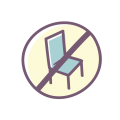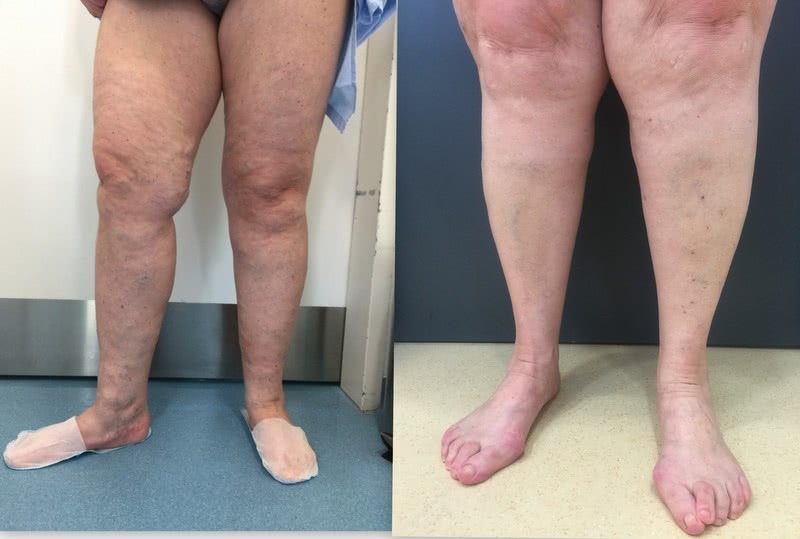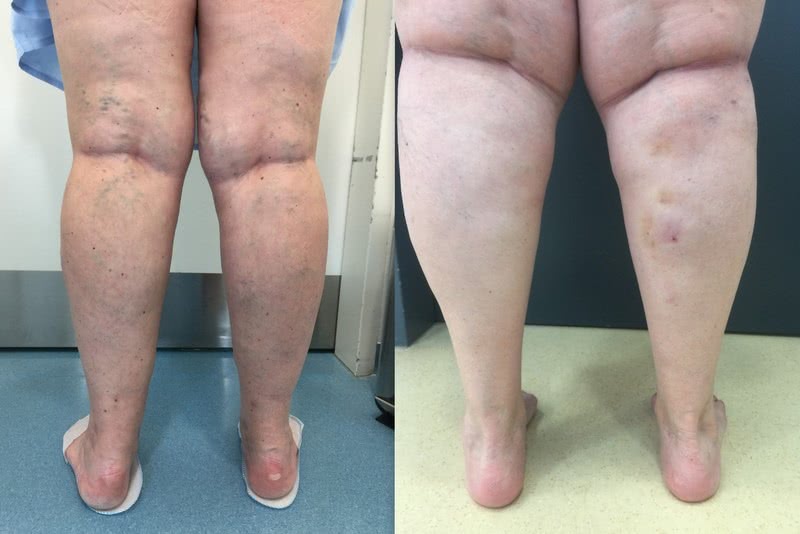HIGHEST QUALITY
We cooperate with only the best clinics in Prague to offer the best available medical services. Our clinics provide a friendly and safe environment and follow the European standards of care and operational procedures.
Varicose veins afflict huge numbers of people worldwide, and their removal is proving to be amongst the more popular of cosmetic treatments. Thy can be a real nuisance with health implications to boot. The good news is many of the treatments now available are minimally invasive, especially when compared with past methods, which saw the patient off his or her feet for extended periods—not to mention the pain, bruising, and scarring they caused. Several contemporary techniques make use of gentler thermal and chemical mediums to shrink or seal off the diseased veins and reroute blood flow, and medical tourism has made these more accessible than ever before. From this modern arsenal, we offer endovenous laser treatment (ELT) and the innovative VenaSeal™, which employs a special ‘super-glue’ to seal off affected veins. Both are as effective as they are gentle and let you get back on your feet quickly. Read on to learn more.




*Prices listed in euros (€) are fixed; those in pounds sterling (£) may vary according to exchange rate at time of procedure.
Application by a certified vascular surgeon
Diagnostic ultrasound scan
Telephone and email assistance during your stay in Prague
Accommodation, airport pickup, flight fare
*However, we are happy to assist you with securing lodging in Prague.
1 day in Prague
99% success rate
Clinically proved safe
Minimally invasive
Minimal discomfort
Quick results
Performed on an outpatient basis—takes only 30 minutes and you can fly back home
Immediate return to work and normal activity
No anaesthesia or numbing medications
No compression stockings
Proved safe and effective through numerous research studies
Minimally invasive with reduced risk of complications
Minimal discomfort
Can be carried out under local anaesthesia
Performed on an outpatient basis, taking only about one hour
Immediate return to normal activities
|
|
VenaSeal Closure System |
Endovenous Laser Treatment |
|
Operating Principle |
Chemical |
Thermal |
|
Anaesthesia |
Especially small amount of local |
Local |
|
Intraoperative Pain/Discomfort |
Virtually pain-free |
Virtually pain-free |
|
Intraoperative Period |
About 30 minutes |
About 60 minutes |
|
Return to Normal Activity |
Immediate, barring vigorous exercise |
Immediate, barring vigorous exercise |
|
Compression Stockings |
No |
Yes |
|
Relative Invasiveness |
Minimal |
Minimal |
|
Incisions |
One small incision at insertion point per treated vein—no sutures |
One small incision at insertion point per treated vein—usually closed with adhesive strip or glue |
|
Potency/Efficiency |
Potent –a single treatment often sufficient |
Potent—published initial success rate of between 95 and 98 percent |
We cooperate with only the best clinics in Prague to offer the best available medical services. Our clinics provide a friendly and safe environment and follow the European standards of care and operational procedures.

The VenaSeal ™ closure system is an innovative and highly advanced technique for the treatment of varicose veins. Non-tumescent, non-thermal, and sclerosant free, clinical studies have shown it is safe, without risk of thermal burns or nerve injury. There is no need for the patient to take any medications prior to the procedure and no need to wear compression stockings afterwards.
VenaSeal™ requires no large incisions, numbing medications, or anaesthesia, and a single treatment is often enough to eradicate varicose veins. Results begin to take effect immediately, and recovery is typically speedy and pain free. Performed on an outpatient basis, the procedure lasts approximately 30 minutes, after which the patient may return home to normal activity.
The VenaSeal™ technique makes use of a proprietary cyanoacrylate polymer or “superglue,” which effectively seals off varicose veins, allowing the body to reroute blood flow to healthy veins and to dissolve the diseased ones.
During the procedure, a catheter is inserted through the skin directly into the affected vein, where a small amount of the superglue is applied. Throughout the procedure, the position of the catheter is actively monitored by means of ultrasound. Following application of the superglue, the treated vein is compressed by ultrasonic probe to ensure a proper seal has been formed.
The VenaSeal™ procedure ends with the removal of the catheter and closure of the insertion site. The superglue hardens, leading to permanent closure of the vein and, in time, its absorption into the body.
Endovenous laser treatment (ELT), along with radiofrequency ablation, is one of two forms of endothermal ablation used to treat varicose veins. In ELT, also known as endovenous laser ablation, a laser fibre is threaded through a thin catheter and guided into the affected vein by ultrasound. The laser is then used to deliver short bursts of energy to heat the walls of the vein along its length, causing it to shrink and seal itself off.
Blood flow is thereby rerouted to healthy veins, and the diseased vein is gradually dissolved and absorbed by the body. The procedure is usually conducted under local anaesthesia, and compression stockings are worn for some time afterwards.
Numerous research studies have demonstrated ELT is both safe and highly effective. It offers results equal to the considerably more invasive method of high ligation and vein stripping, but with the advantage of slightly lower recurrence rates and without the pain and prolonged convalescence associated with the latter. The procedure itself takes only about an hour to perform, and the patient is typically able to return to normal activities immediately.
In terms of outcome, endovenous laser ablation may be thought of as comparable to the VenaSeal™ closure system. Both are viable—if different—treatment options, offering similar benefits, and choosing between the two comes down to personal choice and the advice of your physician. But if you’re looking for a minimally invasive, yet highly effective, method to help rid your body of those unsightly and uncomfortable varicose veins, ELT fits the bill.

We place a special emphasis on the profile of every surgeon. Our company only endorses highly experienced doctors with international practice and positive references. All of our surgeons or their teams speak English fluently.
Other Varicose Vein Treatments and Varicose Vein Removal Options
Sclerotherapy
Sclerotherapy involves the injection of a solution—usually salt based—directly into the diseased vein. This solution scars and closes the vein, causing blood to reroute through healthier veins. Sclerotherapy is a primary treatment option for thread veins and small varicose veins. Compression stockings are required following the procedure to help with healing and to decrease swelling. Possible side effects include blood clots, headaches, lower back pain, fainting, swelling, temporary eyesight issues, itching, and skin colour changes at the treatment site.
Laser Therapy or Laser Vein Treatment
Not to be confused with endovenous laser treatment, laser therapy is also used to treat minor varicose veins and thread veins. Here, concentrated bursts of light energy are delivered directly into the vein, causing it to shrink and gradually disappear. No incisions or needles are required. Though less invasive, laser therapy tends to be less effective than sclerotherapy. Redness, bruising, itching, swelling and permanent skin tone changes are all possible side effects.
Radiofrequency Ablation
The alternate form of endothermal ablation to ELT, radiofrequency ablation involves the delivery of high-frequency radio waves to heat the interior walls of the diseased vein, leading to its collapse and absorption into the body. To accomplish this, a fine wire is passed through a catheter that has been inserted into the vein, and radiofrequency waves are then delivered via a heating element on the end of the wire. Potential side effects include skin burns, sensations of burning and pain from nerve damage, blood clotting, and paraesthesia.
As with both types of endothermal ablation, radiofrequency ablation requires the numbing of skin and surrounding tissues as well as the wearing of compression stockings, following the procedure.
Ambulatory Phlebectomy / Phlebitis Treatment
In ambulatory phlebectomy, the superficial varicose veins are removed directly through the skin, using a small scalpel or needle. The procedure can be performed under local anaesthesia, in the doctor’s office, and is usually reserved for those veins closest to the skin surface. Recovery time is relatively brief, with the patient being able to walk immediately following the procedure. Compression stockings typically must be worn for one to two weeks after the procedure. Possible side effects include temporary hyperpigmentation, bruising, superficial blood clotting, infection, and allergic reaction.
Traditional High Ligation and Vein Stripping
Traditional ligation and stripping entails the removal—partial or complete—of the greater saphenous vein. Generally, this is performed by making at least two incisions in the skin along the vein’s length—at the groin and somewhere farther down, often at the knee.
Through the groin incision, the greater saphenous vein is clamped, cut, and ligated. A thin plastic wire is then passed into the vein at the groin area and guided to the lower incision, where the wire is pulled out and with it the vein. By removing the deeper lying greater saphenous vein, blood supply to the superficial varicose veins is cut off and they can no longer sustain themselves.
Traditional ligation and stripping requires either general or spinal anaesthesia. Recovery time is comparatively long, taking up to four weeks, and the patient is usually not able to walk immediately following surgery. Possible side effects include nerve injury and associated numbness, deep vein thrombosis, chronic leg swelling, and incisional scarring. Compression stockings must be worn following the procedure. With the advent of other, less invasive treatment options, ligation and stripping has become less common.
Endoscopic Perforator Vein Surgery
In this procedure, a small video camera is passed through an incision in the skin and into the varicose vein, where a surgical tool at the tip of the camera is employed to seal off the vein. As in the case of ligation and stripping, endoscopic vein surgery is usually performed only in severe cases, such as those involving leg ulcers, and significant pain and after other techniques have failed. Recovery usually takes several weeks. Possible complications include swelling, deep vein thrombosis, and damage to nerves.
Conservative Measures or Varicose Veins Natural Treatment
Varicose veins can be treated, in some degree, by topical medicaments and compression therapy. A variety of varicose vein creams and spider vein creams are available, and varicose vein socks, or compression stockings, assist in reducing vein diameter and improving blood flow velocity, as well as valve function.
There are likewise a number of home or natural remedies, such as apple cider vinegar, garlic, and cayenne pepper, purported to help improve blood flow and reduce both the swelling and discomfort associated with varicose veins. Such remedies have the merit of being comparatively inexpensive, meaning one can test to see if they help at little cost.
|
|
Ambulatory Phlebectomy |
Laser Therapy |
Sclerotherapy |
High Ligation and Vein Stripping |
Endovenous Laser Treatment |
VenaSeal Closure System |
|
Operating Principle |
Mechanical |
Thermal |
Chemical |
Mechanical |
Thermal |
Chemical |
|
Anaesthesia |
Local |
Local |
Local |
General/Spinal |
Local |
Especially small amount of local |
|
Intraoperative Pain/Discomfort |
Pain levels reported as low, but present, in several studies |
Slight tingling sensation |
Some discomfort from multiple injections; additional pain from sclerosant if accidentally spilt outside of vein; possible tightness in chest |
None due to general/spinal anaesthesia |
Virtually pain-free |
Virutally pain-free |
|
Intraoperative Period |
One to two hours, depending on number of veins |
About 20 minutes |
About 30 to 60 minutes |
About 60 to 90 minutes |
About 60 minutes |
About 30 minutes |
|
Return to Normal Activity |
Day or two off work, follow by return to normal activity, barring vigorous exercise |
Immediate |
Immediate, barring vigorous exercise |
Delayed up to four weeks |
Immediate, barring vigorous exercise |
Immediate, barring vigorous exercise |
|
Compression Stockings |
Yes |
No |
Yes |
Yes |
Yes |
No |
|
Relative Invasiveness |
Minimal |
Least invasive |
Minimal |
Maximal |
Minimal |
Minimal |
|
Incisions |
Multiple 2 to 3 mm incisions |
No |
No |
Yes—usually two incisions—one at the groin and another near the knee |
One small incision at insertion point per treated vein—usually closed with adhesive strip or glue |
One small incision at insertion point per treated vein—no sutures |
|
Potency/Efficiency |
Long term success rates of 90 percent and higher, providing correct indications for procedure are present |
Least potent; reserved for thread veins |
Potent, but may take three or more treatments depending on number of veins |
Aggressive, but effective |
Potent—published initial success rate of between 95 and 98 percent |
Potent –a single treatment often sufficient |

Varicose veins are superficial veins that have become bulging and twisted. They are often blue, purple, and red in colour and can cause aching pain and discomfort. Because standing and walking tend to increase the pressure in the veins of the lower body, varicose veins commonly occur in the legs and feet. Spider veins, also called thread veins, are a milder form of varicose veins and tend to be smaller.
Varicose veins result from the weakening of intravenous valves designed to stop blood running backwards, away from the heart. This valve failure allows backflow, which overstretches veins and enables blood to leak into surrounding tissues, causing swelling. When valves are not working properly, making it difficult for blood to return to the heart from the legs, it is termed venous insufficiency or chronic venous insufficiency.
A corollary condition to varicose veins is phlebitis, also known as superficial thrombophlebitis. This is the inflammation of a vein, usually in the legs, due to blood clot or damaged vein walls. It most commonly occurs in superficial veins and varicose veins are particularly susceptible. With phlebitis, there is also the risk of the blood clot travelling to deeper veins within the body, leading to deep vein thrombosis, a painful condition causing swelling and tenderness.
Some of the key causes of varicose veins include heredity, age, pregnancy, menopause, obesity, sedentariness, and sun exposure.
It is far better to prevent varicose veins than to treat them, and there are a number of ways this may be accomplished. The following recommendations are especially relevant to those who have already undergone some form of varicose veins treatment or are prone to the condition.
Exercise. Move your body. Walking, in particular, is an effective means of weight loss/maintenance and encourages blood circulation in the lower body. Consult your physician on proper intensity levels.
Keep your weight and diet in check. Losing excess fat stores helps reduce the pressure put on your veins. Be careful what and how much food you put in your mouth and adhere to a low-sodium diet to mitigate water retention and leg swelling.
Be careful what you wear. Tight shoes and constrictive garments can impede blood flow. Specifically, abstain from high heeled shoes. Opt for flats, which will work your calf muscles more and so encourage blood flow. As to clothing, avoid any garment that sits tightly around waist, legs, or groin.
Put your legs up. It may also be helpful to elevate your legs, periodically, throughout the day, so that your feet sit above heart-level, which position supports blood flow to that vital organ.
Don’t just stand there. Refrain from standing or sitting in one position for extended periods, instead altering your posture, regularly and often.
Unfold those legs. It may also be best to avoid crossing the legs, as some physicians believe this can impede healthy blood flow.
The VenaSeal™ closure system is minimally invasive and was established as safe in a series of FDA clinical trials. Nevertheless—as with any medical procedure—there is at least some risk involved, no matter how slight.
Potential complications include allergic reaction to the VenaSeal™ superglue, bleeding from the catheter insertion site, infection, deep vein thrombosis, oedema, hematoma, hyperpigmentation, neurological deficits, urticaria, arteriovenous fistula, mild inflammation, pain, paraesthesia, phlebitis, vascular rupture, pulmonary embolism, and visible scarring.
Your surgeon will discuss these with you, in detail, before going forth with the procedure, and we are also happy to address any concerns you might have in this regard.
FREE EVALUATION OF YOUR PHOTOS
After initial contact via phone or email, we will ask you to provide us with photos of the areas which you would like to enhance, with a brief description of what your goals are for the procedure. This is only used to ensure the best evaluation for your personal needs, and all information sent to us will be held in strict confidence. Of course you are under no obligation at this stage, and the evaluation is completely free of charge.
MEDICAL QUESTIONNAIRE
Next, we will ask you to fill in our medical questionnaire, as we need to be confident that there are no existing medical conditions which could affect you undergoing the procedure. Please fill in as much information as possible, and we will get back to you with an evaluation of your questionnaire by one of our doctors.
DEPOSIT PAYMENT
Once an agreement has been made for the proposed dates, prices, and surgeon who will perform the procedure, the next step will be to pay the deposit to the clinic account. The deposit is a 100% booking guarantee of your date. If you do not show up for the surgery without providing us with a reason, we cannot return the deposit back. Of course in the event that you are ill or if an emergency prevents you from keeping your date and you are able to notify us in a timely manner, we are able to find new dates for you and use this deposit to secure a new date.
The outstanding balance must be paid on the day of the surgery (we accept cash, credit cards, or a direct bank transfer into clinic account).
What results can you expect from your procedure? See for yourself in our before and after VenaSeal™ photos.

